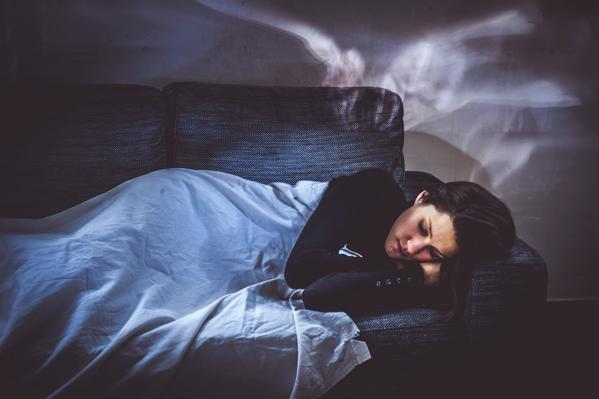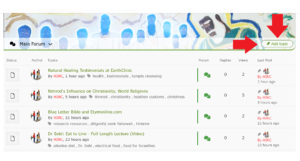- Act 2:17 And it shall come to pass in the last days, saith God, I will pour out of my Spirit upon all flesh: and your sons and your daughters shall prophesy, and your young men shall see visions, and your old men shall dream dreams:
The heathen nations also receive visions and communications (alibi indirectly) from the Most High as well, i.e. Balaam in Numbers Chapters 22-24.
ARTICLE BELOW
The coronavirus pandemic interrupted our lives. It may explain why you’re having vivid dreams.
In the age of coronavirus, dreams have taken on new meaning.
The imaginings are vivid, often strange, sometimes terrifying. Long dead grandparents. Bob Dylan doling out psychic medicine. The dinosaurs reborn.
Experts say dreams are a way for people to understand themselves. Their main function is to process emotions, which for many people have been more intense during the pandemic. People’s waking lives are fraught – fear, uncertainty and helplessness pervade the day. Those same emotions make respite at night elusive.
“In our lives … we’re only consciously aware of about 2% of what’s going on around us and the other 98%, most of that is emotional, and we use our dreams as a way of understanding those emotions,” said Ian Wallace, a psychologist who specializes in dreams. “In a situation like this pandemic, where emotions are heightened, people’s awareness of their dreams are also heightened and these dreams might seem more vivid and more scary.”
We all want to know how the pandemic ends: How do we cope with uncertainty?
One of the most universally common dreams, Wallace said, is one where a person is being chased. The dreamer may be pursuing something, or something is pursuing the dreamer. But the pandemic has put a twist on it.
“Just now, what people are dreaming of in these chase dreams is something faceless,” he said. “Something really hard to identify, something that’s unknown.”
Fear of the unknown is ubiquitous. People want to know when social distancing and quarantines will end. They want to know if they will get sick or if someone they love will. They want to know when the stimulus checks are coming, if they’ll have a job when this is over, what life will look like when people are encouraged to emerge again.
Uncertainty during the day, Wallace said, inevitably influences dreams at night.
“We use our dreams to resolve emotional tension and particularly emotional uncertainty because human beings are not very good at dealing with uncertainty,” he said.
The coronavirus has robbed us all:Let yourself mourn the loss, experts say
Collective stress becomes personal
Ten days after the Bay Area enacted its shelter-in-place order, Erin Gravley had a dream. It wasn’t detailed, but it stood out for how it imitated the realities of her new day-to-day life in Marin County, California. In it, people were standing 6 feet apart. They were meeting, but not shaking hands.
About a year ago, Gravley read Charlotte Beradt’s “The Third Reich of Dreams,” a collection of dreams during Hitler’s reign in Germany. The book showed how people under authoritarianism dreamed differently before Hitler came into power.
“Whatever was happening at the societal level was starting to filter down into people’s dreams in a way that was similar to each other,” she said. “I thought that was interesting since dreaming is so personal.”
Gravley was curious if this period of national stress could be doing the same, so she launched the website “I Dream of Covid,” hoping it will act as a repository for dreams during the pandemic. On the site is a quote from Beradt:
“Throughout all time, people have experienced terrifying dreams, dreams not only touched off by some external crisis of a personal nature or originating in the inner tensions of singularly sensitive persons, but brought about by situations that threaten people collectively.”
Gravley says her goal is to collect enough dreams to examine patterns, which she suspects will vary greatly based on location and circumstance.
“I think that it’s probably going to differ by geography – the severity of the outbreak where you’re living – and also your profession,” she said. “I think people who are working in grocery stores or health care workers who are in contact with more people and under greater stress, their dreams are going to be different from people like me.”
Q&A:Science is the way out of the coronavirus crisis
A return to the past
When people are awake, Wallace said they locate parts of their identity in other people. For example, if someone has a child, some of the mother’s identity is located in the child. People make emotional connections with others and understand themselves through those interactions.
But during periods of social distancing, much of that connection is lost. People start to focus less on who they are in relation to other people. This can change their dreams.
“When we don’t have that social contact, then we kind of retreat into ourselves, and one of the things that comes up is that people start dreaming of people from their past,” he said. “Maybe past lovers, maybe family members who are no longer with us. It can make people feel a little bit sad, a bit nostalgic and that’s when human connection becomes even more important.”
Ending the pandemic:This is what China did to beat coronavirus. Experts say America couldn’t handle it
Making sense of the chaos
Author Gina Barreca says during the pandemic, her dreams have grown more vivid and detailed. She likens them to a 17th-century needlepoint, finely stitched. She wondered if others were experiencing the same.
She asked followers on her public and personal Facebook pages what their dreams have been like. She probed about new patterns and unusual images.
More than 300 people weighed in.
“It was amazing to me how rapidly people responded,” she said. “In the face of chaos, we want to find a narrative. Our brains are desperate to try to make sense of what’s going on around us.”
Barreca said she was surprised at how profoundly her dreams changed despite her relative safety. She has a place to live, her husband is retired and no one she loves is in direct jeopardy.
“My dreams are dreams of being a refugee, of an exile,” she said. “I can’t find bathrooms, I can’t find refuge. I am being chased by people. I don’t know where I am. I lost my phone. I can’t find a map. I am running from something and I’m running to something, but I don’t know what that running to is.”
What to do with dreams
Wallace views dreams as opportunities. He thinks of them as messages people send themselves to help work through feelings. People ought to listen to them, he says, to resolve whatever their brain is stuck on.
People’s dreams during the pandemic, he said, reveal how helpless and out of control many people feel.
“One of the things about this pandemic is that in some ways it’s a real leveler. It doesn’t matter if you’re rich or poor, what your ethnicity or what country or what culture, this thing might hit you next,” he said. “All these different dream images people are creating, they all come back to that.”
Barreca said in this period of emotional turmoil, she’s glad to know her brain isn’t alone in the stories it tells at night.
“We’re all trying to make sense of this in the same way,” she said. “But we shouldn’t see these dreams as somehow predictive. We can let ourselves off the hook from that. If we’re dreaming terrible things, it doesn’t mean that that’s because they’re going to happen.”
Alia E. Dastagir is a recipient of a Rosalynn Carter fellowship for mental health journalism.

